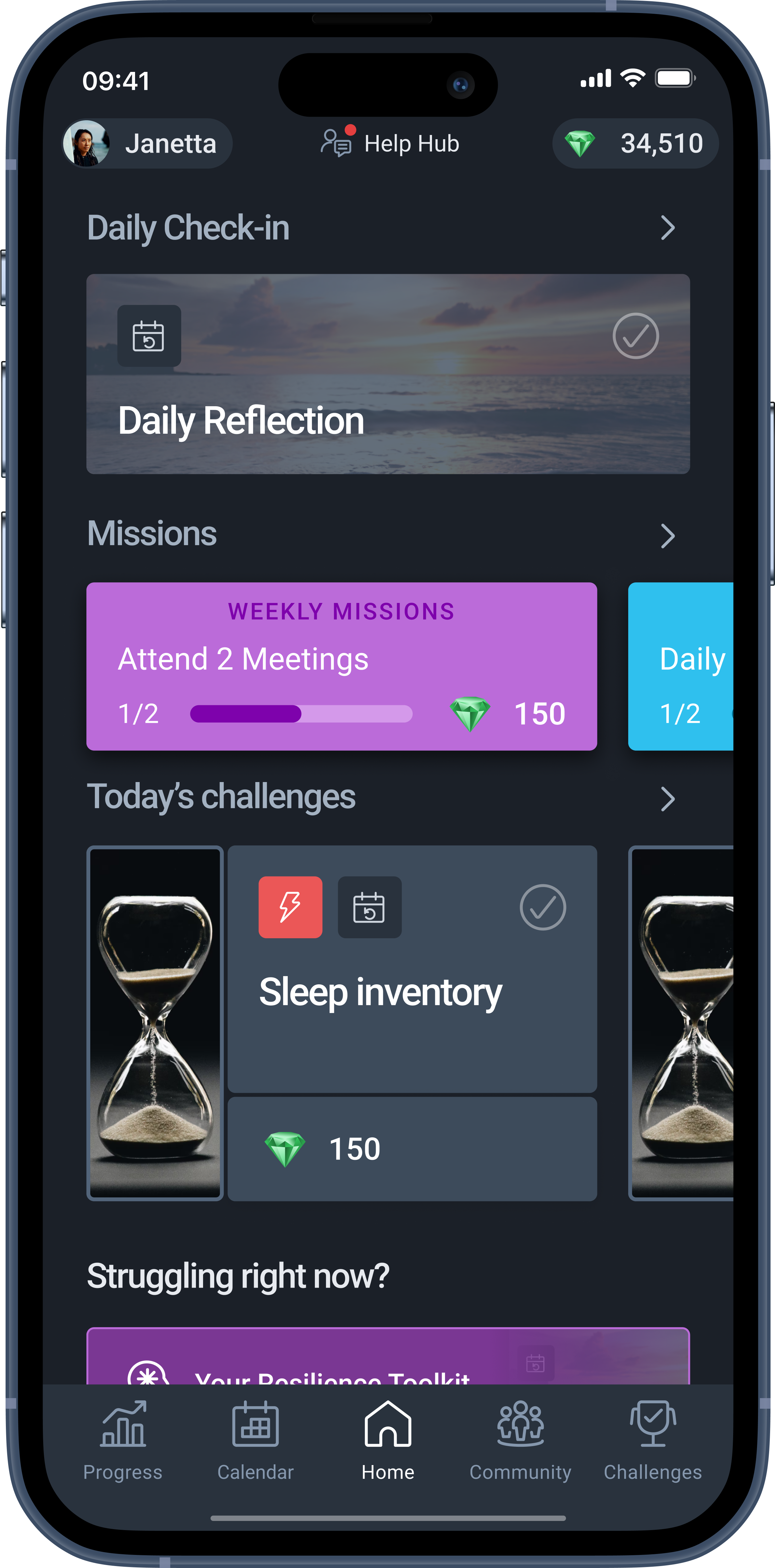What kind of care do you need to stop using drugs and alcohol?
Understanding the levels of care in addiction treatment programs can help you make the best choice
When people make a decision to get addiction treatment for a substance use disorder with alcohol or drugs, they start researching their options. There are many choices, and the amount of information can be overwhelming or difficult to understand.
Do you need detox? Is an inpatient residential treatment facility necessary? Should you go to an outpatient rehab clinic near you? Or is telehealth addiction treatment – like Affect provides through its app – the best fit?
Do I need to go to an outpatient program?
The type of care you need depends on a number of factors. It’s always best to talk to an experienced professional who can listen to your story and help you make the right decision. It’s hard to know who and what to trust. Understanding the levels of care professional use in addiction treatment can help.

What are the levels of care in addiction treatment?
Substance use disorders are chronic conditions that need to be managed for life, similar to a condition like diabetes. There is no “cure” for addiction, and this is why many people say they are “in recovery” or “recovering” even if they have been sober for years. The recovery journey never ends. Treatment helps you stop drinking or using drugs. Then, you learn how to stay off them and achieve lifetime sobriety.
This is why treatment of substance use disorders utilizes a continuum of care that identifies different levels of treatment depending upon the severity of the disorder and potential dangers, such as physical withdrawal symptoms from heavy drinking or opioid use. People enter treatment at the level of care that meets their needs and then move to different levels of care as those needs change.
“Levels of care” refers to the intensity of services that are required to diagnose and treat a condition. The American Society of Addiction Medicine (ASAM) has established five levels in a continuum of care for substance abuse treatment. The numbers at each level indicate the intensity of services provided.
- Level IV: Medically Managed Intensive Inpatient (Withdrawal Management/detox in a hospital)
- Level 3.7WM: Withdrawal Management/detox in a residential setting
- Level III: Residential/inpatient services
- Level II: Intensive outpatient/partial hospitalization services
- Level I: Outpatient services
- Level 0.5: Early intervention services
How do the levels of care work?
To get an idea of how the levels of care in addiction treatment work, here’s how we do it at Affect.
Get online therapy in an app for addiction treatment
Affect offers Level I – and in some states Level II treatment – by delivering telehealth outpatient services through our app. Affect’s program is also a perfect fit for early intervention (Level 0.5) to help people learn to reduce and manage their drinking or drug use when things are starting to get out of control.

Quitting marijuana or stimulants like meth and cocaine does not produce dangerous physical withdrawal symptoms like alcohol and opioids do, but people will still experience post acute withdrawal syndrome (PAWS). Generally, people with marijuana or stimulant use disorders do not require higher levels of care and can go straight into our digital outpatient treatment program.
When people have their first telehealth meeting with a counselor, they go through an assessment of their needs to determine if Affect is right for them or if they need a higher level of care before entering the program.
If someone is a heavy drinker, they may need medically supervised withdrawal management/detox. Physical withdrawal from alcohol can be life threatening. Affect’s treatment consultants will help find a nearby detox facility where they can be monitored. People generally stop experiencing withdrawal symptoms after 3 to 5 days.
Once they’ve completed detox and are safe, people step down to the next level of care appropriate for them with the guidance of a treatment professional.
They may decide to go to an inpatient residential facility (Level III) so they don’t have access to alcohol and drugs and just focus on their recovery. If they are unable to go away for an extended period of time or don’t want to, they may choose an outpatient program (Level I or II).
How does telehealth addiction treatment compare to inpatient or outpatient rehab clinics?
Affect’s program is almost always a great fit to achieve long term recovery, and our outpatient treatment delivers higher success rates than either inpatient or brick-and-mortar outpatient clinics. Affect’s app connects you to care and motivates your recovery journey with rewards for progress. You stay with your job and loved ones and learn to manage your use in your own environment.
Sometimes people think they need to remove themselves from their lives and go to an inpatient residential facility to quit. However, these programs can be costly and ineffective. 60% of people relapse within 30 days of leaving inpatient treatment because they return to their lives with access to supply and the stresses and triggers that cause them to use. 85% will relapse in the first year if they are not working a program in the continuum of care.
Convenience and access to care is a critical factor for a successful recovery journey. Your recovery program must fit your life so you stay with it. Data shows that 95% of people who actively work a program and remain continuously sober for three years will achieve lifetime sobriety. After five years, that number is 99%.
As a virtual outpatient program delivered through a smartphone app, Affect puts all the services of a clinic into your phone. Many people drop out of in-person outpatient treatment because they don’t like going to the required meetings, or the clinic itself.
Some outpatient clinics may discharge people for relapses and require strict abstinence. Affect’s program is built around science and data that shows reduction of use over time is more effective than this traditional approach.


How do providers determine the level of care for addiction treatment?
In addiction treatment, the level of care is determined during the needs assessment process. This is when professionals gather information to better understand your substance use disorder and make an informed decision about treatment.
Examples of questions asked in the needs assessment process may include:
- Have you participated in any kind of treatment program before?
- How often are you using and how much?
- Do you have a mental health diagnosis or history of mental health?
- Do you have any medical issues or take medications?
The needs assessment is comprehensive, and there are many factors that influence treatment recommendations. Treatment professionals and counselors are not sales people; they perform objective assessments and make the recommendations based upon data, years of experience, and high ethical standards.
The levels of care explained
Having seen how Affect provides care and guidance in our program, these descriptions provide more detail about the various levels of care in treatment of substance use disorders.
Withdrawal Management / Detoxification
Medically-managed intensive inpatient, known informally as detox, is for people with severe substance use disorders who require medical stabilization. In most cases, clients are experiencing withdrawal symptoms due to dependency. They receive 24-hour medical care, medications, and counseling at this level of care.
Detox programs are often the first stage of recovery for severe alcohol use disorder. It can be life threatening to abruptly stop using alcohol when the body has become dependent upon it.
The body cleanses itself of alcohol toxins within 3-5 days and physical withdrawal symptoms end. However, Post Acute Withdrawal Syndrome (PAWS) can persist much longer, so it is critical to begin a treatment program immediately to keep from relapsing after having gone through the harsh experience of detoxification.
Withdrawal from marijuana and stimulants like methamphetamine, crack, cocaine, and prescription drugs such as Adderall or amphetamines does not involve severe physical symptoms that are life threatening. However, these substances are powerfully addictive and cravings are intense. There are no FDA-approved medications for these disorders, but certain medications can be prescribed that help with discomfort and can ease cravings.
Residential / Inpatient
Inpatient / residential refers to rehabilitation facilities where people live while getting treatment. Services and settings can range in intensity for residential and inpatient programs. As the name suggests, clients live on-site, meaning they have 24-hour supervision or care. Program length can vary and is dependent on individuals’ needs, but it is usually between 30 to 90 days. Typically, days are scheduled with activities, therapy, and medical care, leaving minimal free time.
Inpatient care is often for clients who have completed medical detox and no longer require medical stabilization, but are struggling and need to be completely removed from access to supply of alcohol and drugs. People who have difficulty maintaining their recovery journey may need to step up to this level of care for a period of time to regain control.
Intensive Outpatient / Partial Hospitalization
Intensive outpatient and partial hospitalization are Level II services. Like outpatient, intensive outpatient programs (IOP) occur in non-residential settings. However, IOP consists of more treatment hours per week than outpatient – usually nine hours or more. IOP may be ideal for clients who have complex symptoms or co-occurring disorders (using multiple substances) but don’t need inpatient treatment. IOP can be a step-down level of care for clients who have completed inpatient rehab.
Partial hospitalization programs (PHP) are 20 or more hours per week and are designed for complex substance use disorders or co-occurring disorders that do not require 24-hour care. These may also be referred to as day programs as they are usually up to 6 hours per day. Partial hospitalization is not residential treatment. Similar to IOP and other levels of care, PHP can be a step up or step down depending on clients’ treatment needs.
Outpatient
The outpatient level of care takes place in a non-residential setting, so clients can live at home while participating in treatment. According to ASAM criteria, outpatient treatment is less than 9 hours per week for adults.
This level of care may be for someone with less severe symptoms of a substance use disorder. It is also the level of care someone leaving an inpatient residential facility will step down to so they can maintain there sobriety journey with the help they need.
Early Intervention
We know that early intervention can help prevent substance use disorders. Early intervention services focus on education and resources for those who may be at risk for a substance use disorder but do not meet the diagnostic criteria. They may be misusing substances. Intervention may occur through informal counseling or structured therapy. It is best to work with a counselor who has experience with substance use disorders to get the right guidance and support if necessary.
Talk confidentially with a counselor to determine the level of care you need
There is no “one size fits all” approach for addiction treatment. There is no standard timeline for recovery. For these reasons, it’s important that people with substance use disorders have access to the level of care that meets their needs at the right time.
Whether people are “sober curious” and trying to assess if they need professional help or if they have come to the realization that they do and are ready, talking confidentially with a counselor is the first step. An objective, non-judgmental conversation in a comfortable setting with an empathetic and experienced counselor can be the moment when a new life begins.
If you’re ready to have that conversation, we’re ready to listen.



